
Discover the top 17 Amazon competitors to watch out for in 2023. From Walmart Marketplace to Alibaba, maximize your reach and sales opportunities.
In today’s fast-paced e-commerce landscape, Amazon is no longer the only player in the game. In this article, we will provide a detailed analysis of the top Amazon competitors that are revolutionizing the industry. By understanding their strengths and unique selling points, online retailers can make informed decisions on where to list their products and maximize their reach.
Walmart Marketplace is a biggest rival clash

Walmart Marketplace is a rapidly growing platform, offering third-party sellers an opportunity to leverage the retail giant’s extensive customer base. Key features include:
Wide audience reaches: With millions of daily visitors, Walmart is one of the largest retailers in the United States.
Trusted brand: Walmart’s established reputation helps drive customer trust and loyalty.
Seller Support: Walmart offers comprehensive support resources, including detailed guides and responsive seller support teams.
Who is Amazon’s Biggest Competitor?
Amazon operates in various industry segments, making it challenging to pinpoint a single competitor that rivals the company across all its business areas. However, in the e-commerce domain, Walmart stands out as Amazon’s most significant competitor. In recent years, Walmart has made substantial strides in enhancing its online presence and capabilities to compete with Amazon more effectively. Here are some key reasons why Walmart is considered Amazon’s biggest competitor:
1. Walmart’s Secret Weapon to Crush Amazon: Find Out How They’re Changing the E-commerce Game!
Walmart has been aggressively investing in its e-commerce division, including acquisitions of e-commerce companies like Jet.com and Flipkart, and launching Walmart+, a subscription-based service that offers free shipping and other benefits similar to Amazon Prime.
2. Strong Brick-and-Mortar Presence
Walmart’s extensive network of physical stores gives the company a unique advantage, allowing it to implement omnichannel strategies, such as buy-online-pickup-in-store (BOPIS) and curbside pickup. These options cater to customers who prefer the convenience of online shopping with the immediacy of in-store pickups.
3. Price Wars: How Walmart’s Unbeatable Prices are Giving Amazon a Run for Its Money!
Walmart’s competitive pricing has always been a cornerstone of its retail strategy, appealing to budget-conscious shoppers who seek the best value for their money. As the e-commerce landscape becomes increasingly competitive, Walmart’s low prices have proven to be a significant advantage in its ongoing battle with Amazon. Let’s dive deeper into how Walmart’s pricing strategy is challenging Amazon in the e-commerce market.
Everyday Low Prices
Walmart’s “Everyday Low Prices” philosophy ensures that customers can consistently find affordable products across various categories. By maintaining low prices throughout the year, Walmart attracts a loyal customer base that trusts the brand to deliver value without waiting for seasonal sales or promotional discounts.
Price Matching
To further solidify its commitment to competitive pricing, Walmart offers a price-matching policy for online purchases. If a customer finds an identical product at a lower price on a qualifying retailer’s website, Walmart will match the price, reinforcing its position as a value-driven retailer in the e-commerce space.
Economies of Scale
Walmart’s massive scale allows the company to negotiate better deals with suppliers, resulting in lower procurement costs. These savings are passed on to customers in the form of lower prices, enabling Walmart to maintain its competitive edge against rivals like Amazon.
5. Private Label Brands
Walmart has been expanding its portfolio of private label brands, offering high-quality products at lower prices than their branded counterparts. By controlling the production and distribution of these products, Walmart can keep costs down and offer customers more affordable alternatives.
Dynamic Pricing Strategies
Walmart utilizes advanced pricing algorithms and real-time data to optimize its pricing strategy. By closely monitoring market trends and competitor pricing, Walmart can adjust its prices accordingly, ensuring that it remains a competitive player in the e-commerce market.
Online Grocery Services
Walmart has made significant inroads in the online grocery segment, leveraging its physical stores as fulfillment centers and offering services like grocery pickup and delivery. This focus on online grocery services allows Walmart to compete with Amazon in a rapidly growing market.
5. Walmart vs. Amazon: The Epic Battle for E-commerce Supremacy – Which Retail Giant Will Come Out on Top?
The fierce competition between Walmart and Amazon has intensified as both retail giants continue to innovate and expand their reach in the e-commerce market. Each company has distinct strengths and strategies that contribute to their ongoing rivalry. In this article, we will explore the critical factors in this epic battle for e-commerce supremacy and consider which retail giant might come out on top.
While Amazon faces competition from various players in different industry segments, Walmart emerges as its most significant competitor in the e-commerce market. Walmart’s expanding e-commerce operations, strong brick-and-mortar presence, competitive pricing, online grocery services, and diversified product offerings position the company as a formidable rival in the ongoing battle for e-commerce supremacy.
eBay vs. Amazon: How eBay Can Generate More Revenue for E-commerce Businesses
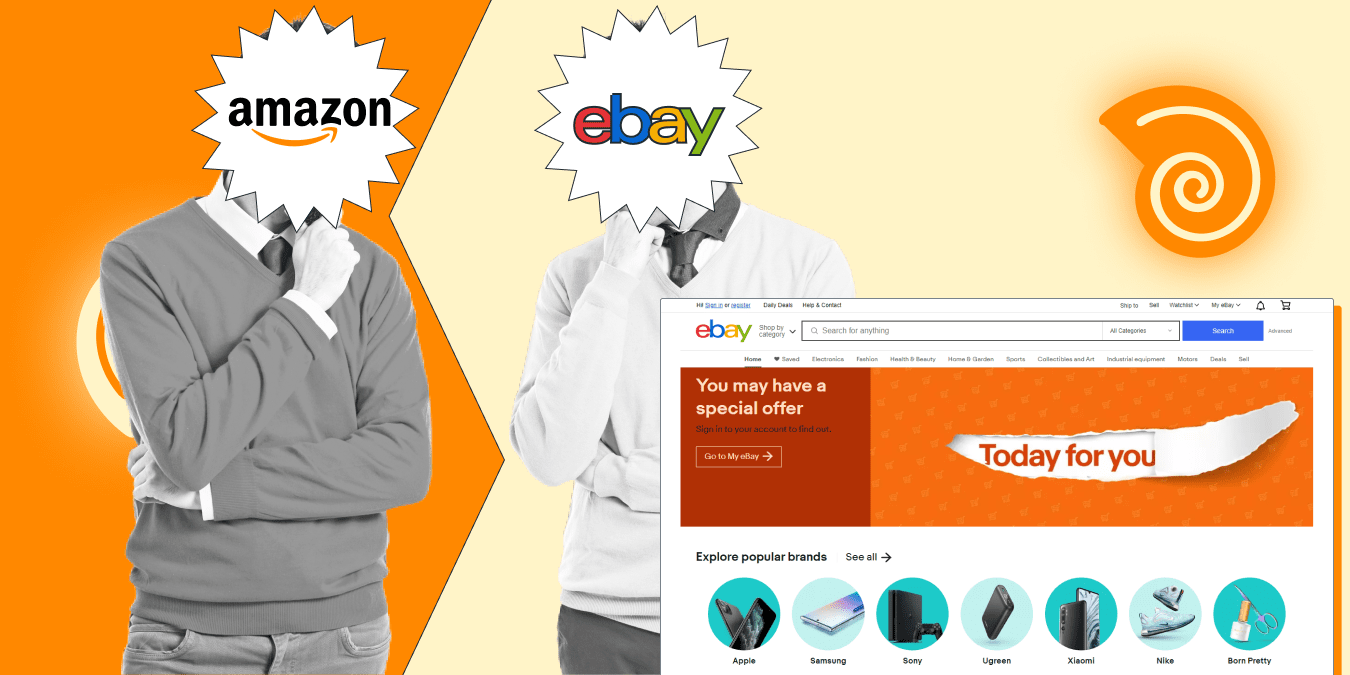
eBay and Amazon are two of the most prominent e-commerce platforms globally, each offering unique opportunities for sellers. However, eBay possesses certain characteristics that may lead to increased revenue generation for e-commerce businesses compared to Amazon. Here are the key features that set eBay apart:
1. Auction-based Platform
Unlike Amazon’s predominantly fixed-price model, eBay is renowned for its auction system that allows sellers to list items with starting bids. This competitive bidding environment can potentially drive up the final sale price, resulting in higher revenues for sellers.
2. Extensive Global Reach
While Amazon has a strong international presence, eBay operates in over 100 countries, providing sellers with even broader access to global markets. By tapping into diverse customer bases across the world, sellers can significantly increase their sales and revenue potential.
3. Flexible Selling Options
On eBay, sellers have the freedom to choose between fixed-price listings and auction-style listings, depending on their preferred selling strategy. This flexibility allows sellers to experiment with different approaches to maximize their revenue generation, whereas Amazon mainly focuses on fixed-price listings.
Boost Your eBay Sales with Sellbery: Unlock the Power of Multichannel Selling
eBay sellers can significantly enhance their selling experience and capitalize on additional benefits by incorporating Sellbery into their e-commerce strategy. Here’s how Sellbery can help you unlock the full potential of your eBay business:
Multichannel Selling: Sellbery empowers eBay sellers to broaden their reach by listing products on other popular platforms like Amazon and Shopify. By leveraging multichannel selling, you can tap into new markets and boost your sales opportunities.
Efficient Inventory Management: Managing inventory across multiple channels can be challenging. With Sellbery, you can streamline inventory management, reducing the risk of stock discrepancies and overselling. Keep your inventory levels in check and maintain a seamless shopping experience for your customers.
Time-Saving Automation: Sellbery automates various aspects of the selling process, allowing eBay sellers to focus on sourcing unique products and building their brand. Save time and resources by automating tasks such as listing creation, order processing, and inventory updates.
Take the Next Step: Boost Your eBay Business with Sellbery
Are you ready to elevate your eBay sales and expand your e-commerce horizons? Get Started with Sellbery and discover the power of multichannel selling, efficient inventory management, and time-saving automation.
Alibaba Group vs. Amazon: The Battle of Global E-commerce Titans
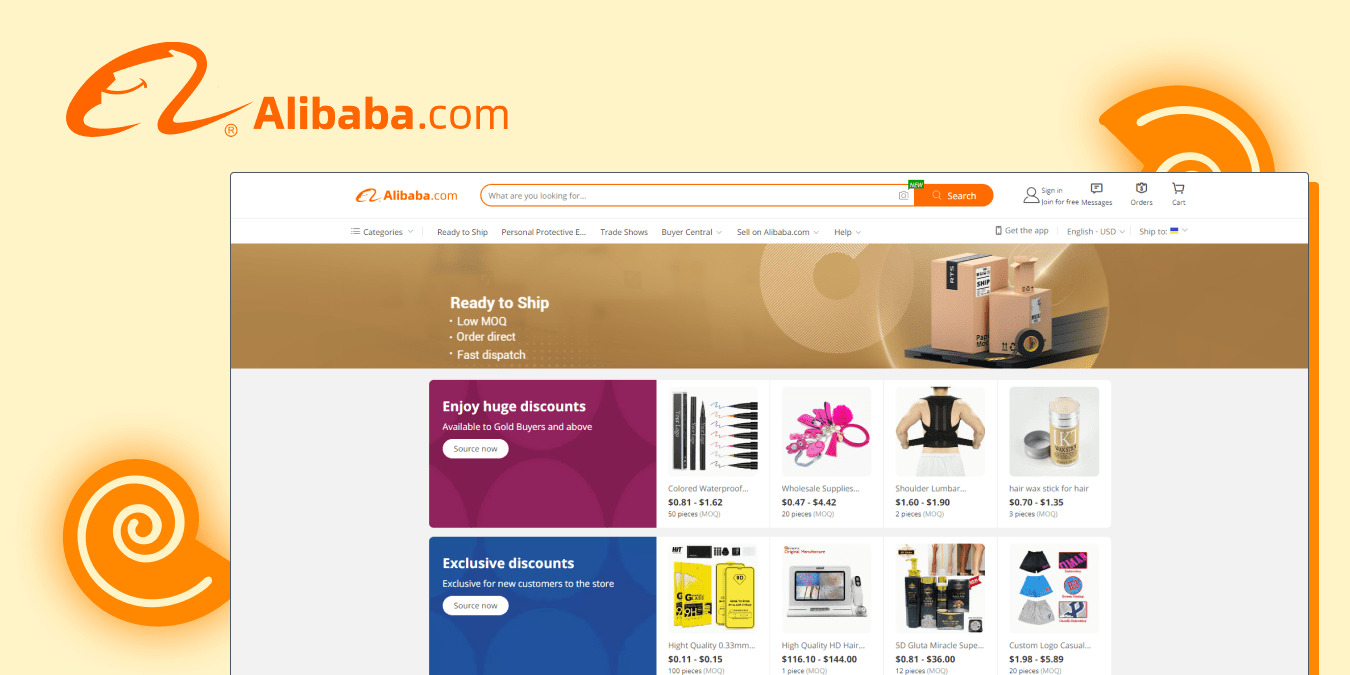
Alibaba Group, a leading B2B marketplace, has emerged as a formidable competitor for Amazon in the global e-commerce landscape. With its unique strengths and offerings, Alibaba connects wholesalers, manufacturers, and retailers worldwide. Let’s explore how Alibaba Group’s key features make it a powerful challenger to Amazon:
1. Extensive Product Variety
Alibaba offers a vast range of products across multiple categories, making it an ideal platform for sourcing wholesale goods. This extensive product variety enables businesses to find competitively priced items and create a diverse product catalog, allowing them to stand out in the e-commerce market.
2. Trade Assurance
Alibaba’s trade assurance program distinguishes the platform by offering secure payment options and dispute resolution services. This program helps protect buyers, ensuring a safe and reliable purchasing experience, which is crucial for fostering trust and confidence among businesses operating on a global scale.
3. Supplier Ratings
The platform’s comprehensive rating system allows buyers to evaluate suppliers based on their performance and reliability. By providing transparency and accountability, Alibaba enables businesses to make informed decisions when selecting suppliers, ultimately leading to better product quality and customer satisfaction.
4. Global B2B Focus
While Amazon has a strong B2C focus, Alibaba specializes in connecting businesses worldwide, making it an attractive alternative for companies seeking to expand their supply chain and reach new markets. This B2B focus allows Alibaba to cater to a different segment of the e-commerce market, positioning it as a formidable competitor to Amazon.
Alibaba Group’s extensive product variety, trade assurance program, supplier ratings, and global B2B focus make it a powerful challenger to Amazon in the e-commerce arena. As both companies continue to innovate and expand their global reach, the competition between these e-commerce giants is set to intensify.
AliExpress vs. Amazon: The Clash of E-commerce Giants in the Global Marketplace
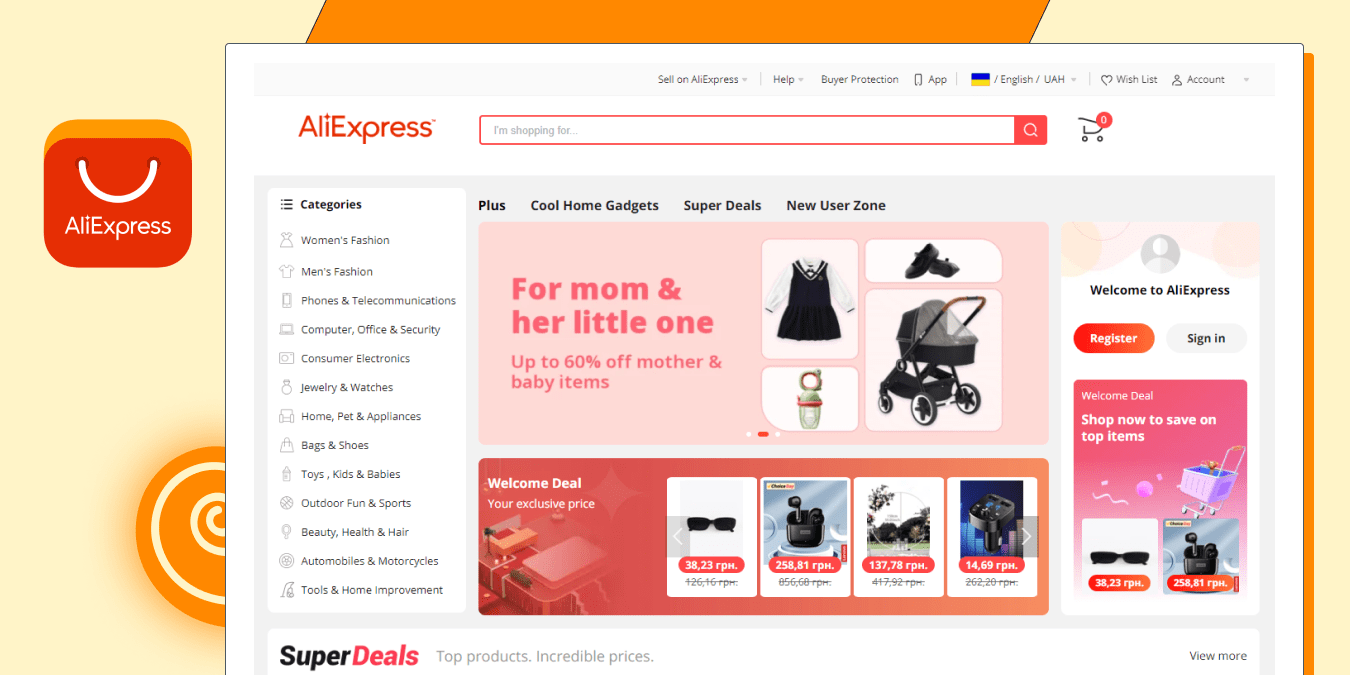
AliExpress, a popular online retail platform owned by the Alibaba Group, has emerged as a formidable competitor to Amazon in the global e-commerce arena. With its unique features and strengths, AliExpress is challenging Amazon’s dominance in the market. Let’s examine the key factors that contribute to AliExpress’s competitive edge:
1. Unbeatable Deals: How AliExpress’s Competitive Pricing Lures Budget-Conscious Shoppers
AliExpress is renowned for its competitive pricing, offering a vast array of products at affordable rates. This pricing strategy appeals to budget-conscious shoppers, positioning the platform as a strong alternative to Amazon for those seeking the best deals.
2. Global Reach: AliExpress’s Extensive Supplier Network Offers Unrivaled Product Diversity
AliExpress connects buyers with a vast network of suppliers from around the world, particularly from China. This extensive supplier network enables the platform to offer a diverse range of products, often at lower prices than those found on Amazon, catering to a wide variety of consumer needs and preferences.
3. Dropshipping Friendly: AliExpress’s Seamless Integration and Fulfillment Solutions Empower Entrepreneurs
AliExpress is known for being a popular choice among dropshippers, as it allows for seamless integration with various e-commerce platforms and offers a convenient order fulfillment process. This dropshipping-friendly approach enables entrepreneurs to build and scale their businesses with ease, making AliExpress a serious contender in the e-commerce market.
4. Secure Shopping: AliExpress’s Escrow-Based Payment System Fosters Trust and Confidence
To enhance buyer trust and security, AliExpress employs an escrow-based payment system. This system holds funds until the buyer confirms receipt of the product, ensuring a secure and reliable transaction process. This feature is particularly appealing to international shoppers who may be hesitant to make purchases from overseas sellers.
AliExpress’s attractive pricing, global supplier network, dropshipping-friendly approach, and escrow-based payment system make it a powerful competitor to Amazon in the global e-commerce landscape. As both platforms continue to evolve and cater to diverse consumer needs, the battle for market supremacy is expected to intensify.
Amazon Handmade’s Quest to Compete with Etsy’s Artisanal Dominance
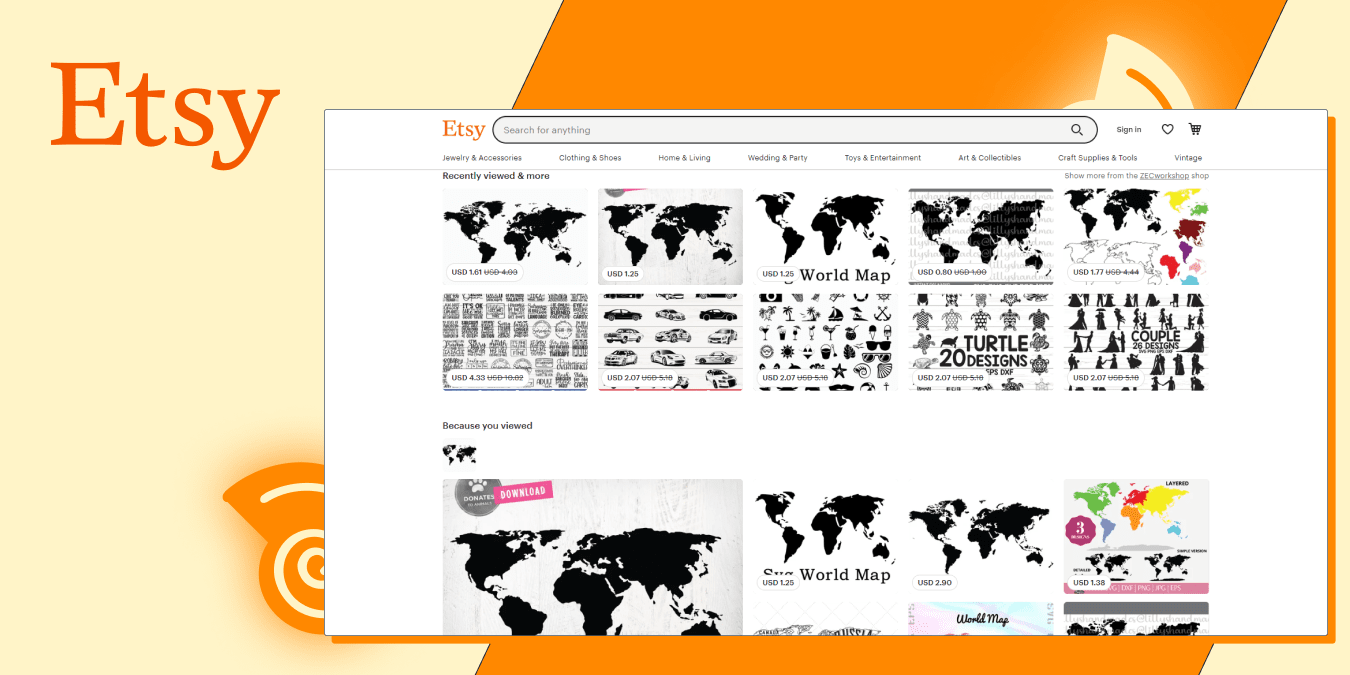
While Etsy has long been the go-to platform for handmade, vintage, and craft supplies, Amazon introduced its Handmade marketplace to tap into this niche market. Let’s explore the key features of Etsy and how Amazon Handmade is attempting to compete with Etsy’s artisanal dominance:
1. Niche Market Focus
Etsy has carved out a unique space in the e-commerce world by catering to a specific audience looking for unique, artisanal products. Amazon Handmade, recognizing the growing demand for such items, has entered this niche market, aiming to provide a similar platform for creative entrepreneurs.
2. Community-Driven Approach
One of Etsy’s defining characteristics is its strong community-driven ethos, which emphasizes the connection between buyers and sellers. This sense of community fosters loyalty and trust among users. Amazon Handmade seeks to replicate this community feel by highlighting individual artisans and their stories, creating a more personal shopping experience.
3. Seller Tools and Support
Etsy has long provided a range of seller tools and support to help its creative entrepreneurs manage their shops, track inventory, and analyze performance. To compete with Etsy, Amazon Handmade must offer comparable resources and support to help artisans thrive on its platform.
4. Balancing Scale and Authenticity
While Amazon is known for its massive scale and extensive product offerings, Etsy’s success is largely attributed to its focus on authenticity and its dedication to the artisanal community. For Amazon Handmade to truly compete with Etsy, it must strike a delicate balance between leveraging Amazon’s vast infrastructure and maintaining the unique charm and personal touch that appeals to the handmade market’s customers.
Amazon Handmade’s quest to compete with Etsy’s artisanal dominance involves addressing the niche market focus, community-driven approach, seller tools and support, and balancing scale and authenticity. It remains to be seen whether Amazon Handmade can successfully challenge Etsy’s position as the leader in the handmade and artisanal e-commerce market. Learn more about Etsy competitors, and who else they are battling against.
Enhanced Etsy Experience with Sellbery
By utilizing Sellbery, Etsy sellers can further enhance their selling experience and unlock additional benefits:
Multichannel selling: Sellbery enables Etsy sellers to expand their reach by listing products on other popular platforms like Amazon and Shopify, increasing sales opportunities.
Efficient inventory management: The platform simplifies inventory management across multiple channels, reducing the risk of stock discrepancies and overselling.
Time-saving automation: Sellbery automates various aspects of the selling process, allowing Etsy sellers to focus on creating unique products and building their brand.
In conclusion, Sellbery is an invaluable tool for online retailers looking to maximize their potential in today’s competitive e-commerce landscape. By integrating with popular platforms like Etsy, Amazon, and Shopify, sellers can efficiently manage their business operations and tap into new markets with ease.
To learn how to master your etsy listing, you can read more in this article.
Rakuten
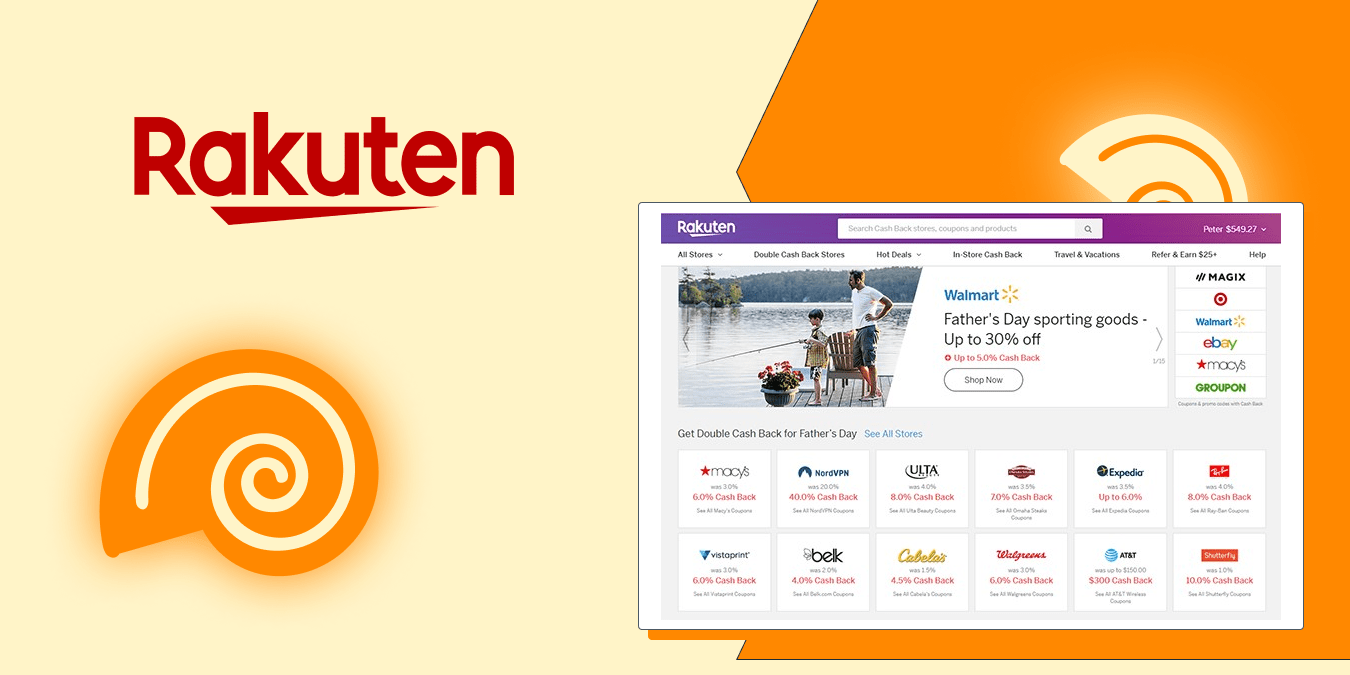
Rakuten is a Japanese e-commerce giant that has expanded its presence worldwide.
Key features include:
Loyalty program: Rakuten’s loyalty program, Rakuten Points, incentivizes shoppers to make repeat purchases.
Global expansion: With its acquisition of several e-commerce platforms, Rakuten is expanding its reach in international markets.
Diverse product categories: Rakuten offers a wide array of products, from electronics to fashion.
Newegg
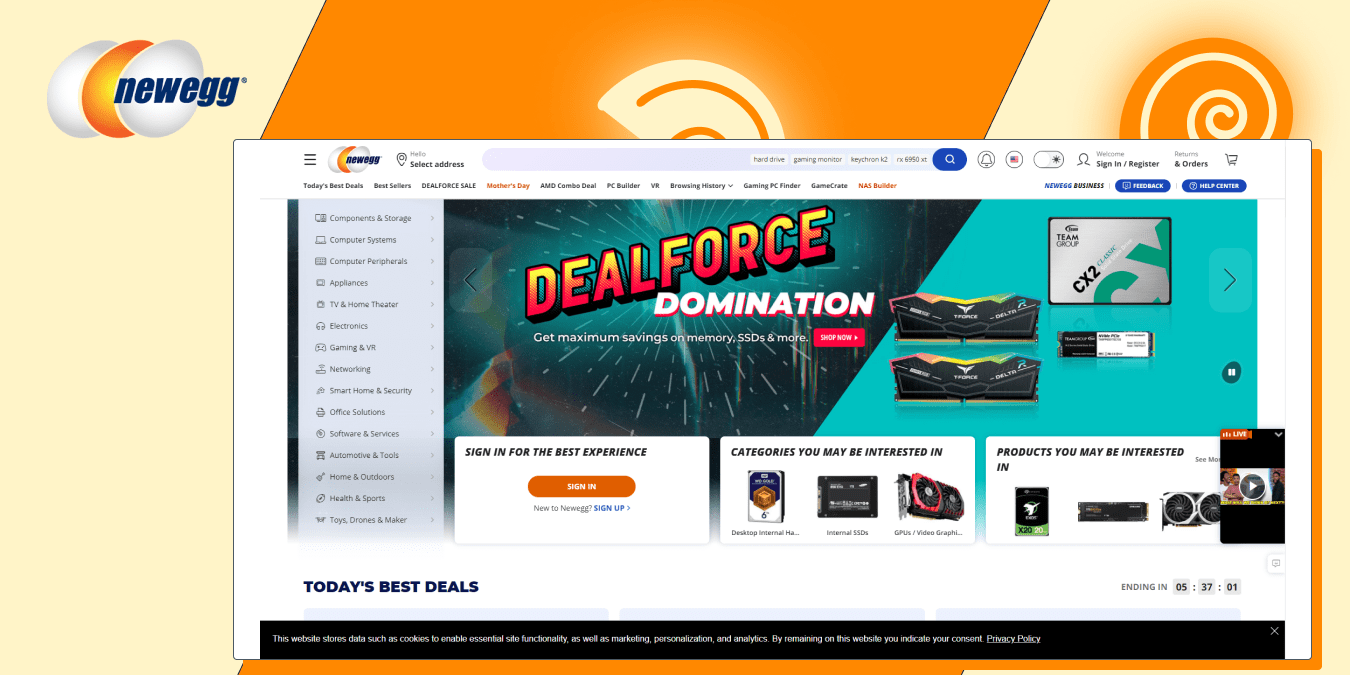
Newegg is a leading e-commerce platform specializing in tech products and electronics. Key features include:
**Targeted audience: Newegg caters to a tech-savvy customer base, providing a focused platform for sellers in the electronics and computer hardware industries.
Daily deals: The platform features daily deals and promotions, driving customer engagement and attracting bargain hunters.
Seller tools: Newegg offers a suite of seller tools, including inventory management and performance analytics.
Jet.com

Jet.com, acquired by Walmart in 2016, is an innovative e-commerce platform focused on competitive pricing and user experience. Key features include:
Smart cart technology: Jet.com’s Smart Cart system adjusts product prices based on the items added to the cart, encouraging larger orders and bundled purchases.
Transparent pricing: The platform provides a clear breakdown of pricing factors, including shipping and taxes.
Integration with Walmart: Jet.com benefits from its affiliation with Walmart, leveraging the retail giant’s resources and customer base.
Shopify

Shopify is a powerful e-commerce platform that allows businesses to create and manage their online stores. Key features include:
Customizable storefront: Shopify provides a range of customizable themes and templates, allowing sellers to create a unique online presence.
App integrations: The platform supports a wide variety of third-party apps, streamlining business operations such as inventory management, marketing, and customer support.
Payment processing: Shopify offers its own payment gateway, Shopify Payments, as well as integration with popular payment providers like PayPal and Stripe.
Wish
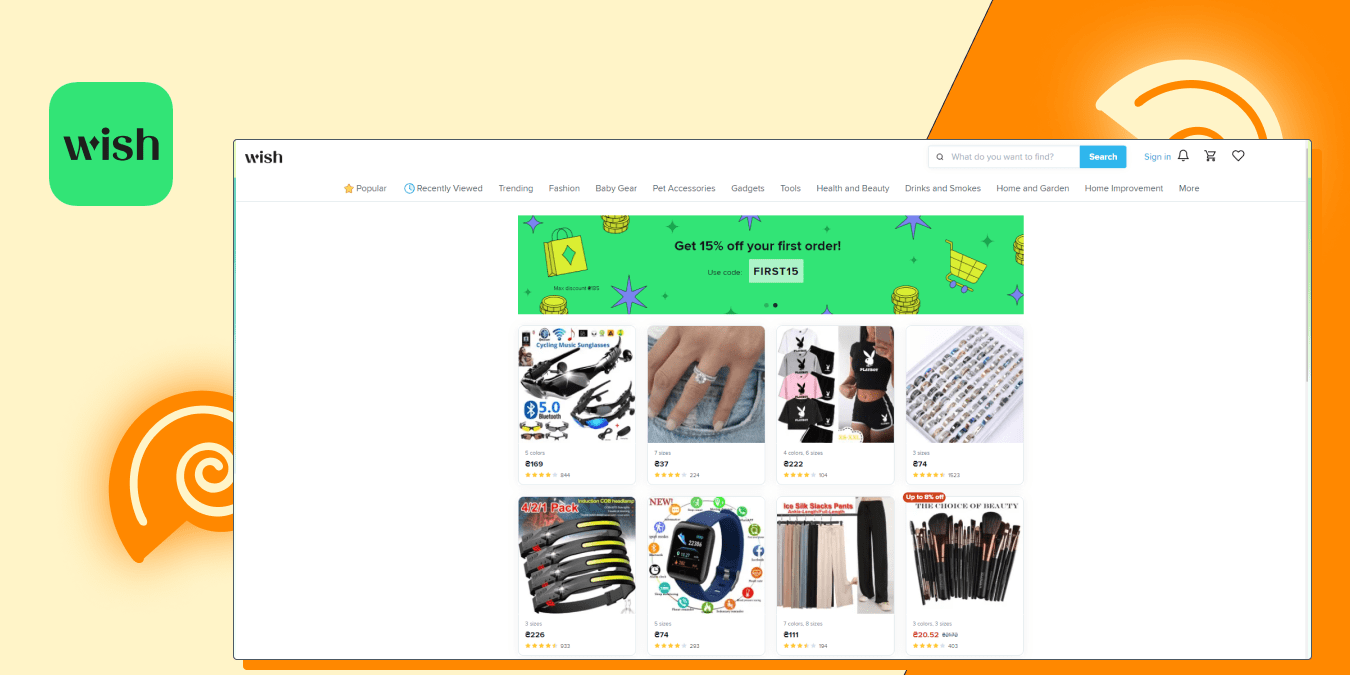
Wish is a mobile-first e-commerce platform that emphasizes affordable products and a personalized shopping experience. Key features include:
Mobile-focused: Wish is designed for mobile shopping, catering to the increasing number of smartphone users worldwide.
Product discovery: The platform uses personalized algorithms to display products tailored to each user’s preferences and interests.
Global seller base: Wish connects buyers with sellers from around the world, offering a diverse range of products at competitive prices.
Zalando

Zalando is a leading European online fashion retailer, offering a wide selection of clothing, accessories, and footwear. Key features include:
Fashion-focused: Zalando specializes in the fashion industry, providing a dedicated platform for apparel and accessory sellers.
European market: With a strong presence in Europe, Zalando enables sellers to target European customers effectively.
Brand partnerships: Zalando collaborates with well-known fashion brands, driving customer trust and brand recognition.
GS-JJ.com
GS-JJ is part of one of the largest promotional gift manufacturers in China, with its own factory, engaged in the production of promotional gift products for more than 20 years! Key features include:
Diverse types of customized products: GS-JJ offers a wide range of customized products from promotional gifts to daily life products and apparel.
Online design: GS-JJ support online design with free templates and unlimited modifications. Design tools and designer online services.
Transparent and favorable pricing: No Minimum & Bulk Discounts
Global direct marketing: Free Shipping to US/Canada/UK/Australia…
What makes Amazon different from its competitors?
Amazon’s success in the e-commerce industry can be attributed to several factors that set it apart from its competitors. These key differentiators have allowed the company to maintain its market dominance and continue to attract and retain customers.
Some of the crucial factors include:
- Vast product selection
- Amazon Prime membership benefits
- Advanced technology and personalization
- Robust fulfillment network
- Amazon Web Services (AWS)
- Customer-centric approach
1. Customer-Centric Approach
Amazon’s primary focus has always been on customer satisfaction, which has earned the company a loyal customer base. From personalized recommendations to hassle-free returns, Amazon continually strives to enhance the customer experience and meet their evolving needs.
2. Extensive Product Selection
Amazon offers a vast range of products across numerous categories, making it a one-stop-shop for customers. This extensive selection attracts a diverse audience and encourages repeat purchases.
3. Efficient and Fast Shipping
Amazon has revolutionized the shipping industry with its Amazon Prime service, which offers free two-day shipping and other benefits to subscribers. The company’s investment in logistics infrastructure, such as fulfillment centers and delivery networks, ensures efficient and fast delivery of products.
4. Competitive Pricing
Amazon’s pricing algorithms and large scale allow it to offer competitive prices, often undercutting its competitors. Additionally, the platform’s price comparison tools enable customers to make informed purchasing decisions, further enhancing Amazon’s reputation as a value-driven marketplace. The ultimate guide on Amazon’s pricing strategy can be found to learn more about in this aritcle.
5. Technological Innovation
Amazon has always been at the forefront of technological innovation, utilizing advanced algorithms, artificial intelligence, and machine learning to streamline processes and improve customer experience. This ongoing commitment to innovation has allowed Amazon to stay ahead of its competitors and adapt to changing market demands.
6. Amazon Web Services (AWS)
AWS, Amazon’s cloud computing division, has become a significant source of revenue for the company. By providing reliable and scalable cloud services, Amazon has attracted a vast client base that includes startups, enterprises, and public sector organizations.
7. Global Presence
Amazon operates in multiple countries, allowing it to reach a broad audience and cater to the unique needs of each market. This global presence has enabled the company to expand its customer base and capture market share in various regions.
Amazon’s competitive advantage stems from a combination of factors that include its customer-centric approach, extensive product selection, efficient shipping, competitive pricing, technological innovation, AWS, and global presence. These advantages have helped the company maintain its dominant position in the e-commerce industry and continue to drive growth.
Bonus: here are some tips and tricks on how to sell on Amazon.
Amazon’s Video Streaming Competition: Key Players and Market Dynamics
As the video streaming industry continues to grow, Amazon faces increasing competition from both established and emerging platforms. Amazon Prime Video, the company’s streaming service, offers a vast library of movies, TV shows, and original content to subscribers. However, several other players in the market are vying for viewers’ attention and challenging Amazon’s dominance. In this section, we will discuss the key competitors and market dynamics shaping Amazon’s video streaming competition.
1. Netflix
Netflix is arguably Amazon Prime Video’s most significant competitor, with an extensive content library and a strong focus on original productions. The platform’s investment in high-quality shows and movies has helped it gain a loyal following and maintain its position as a market leader.
2. Disney+
Disney+ has quickly emerged as a major contender in the video streaming landscape, leveraging the company’s vast library of iconic content, including franchises such as Marvel, Star Wars, and Pixar. The platform’s family-friendly offerings and exclusive content make it an attractive option for viewers of all ages.
3. Apple TV+
Apple TV+ entered the video streaming market with a focus on original content, featuring exclusive shows and movies produced by renowned creators and featuring A-list talent. Though relatively new to the scene, Apple’s brand recognition and customer base have helped the platform gain traction.
4. HBO Max
HBO Max, owned by WarnerMedia, combines the extensive content library of HBO with additional offerings from various WarnerMedia properties, such as DC Comics, Cartoon Network, and Turner Classic Movies. The platform’s strong lineup of critically acclaimed shows and films makes it a formidable competitor in the streaming market.
5. Hulu
Hulu, now controlled by Disney, offers a unique mix of live TV, on-demand content, and original programming. The platform’s diverse offerings cater to a wide range of viewer preferences and its competitive pricing has helped it remain a popular choice among cord-cutters.
6. Peacock
Owned by NBCUniversal, Peacock offers a combination of classic TV shows, movies, and original content, as well as live sports and news. The platform’s tiered pricing, which includes a free ad-supported option, makes it an accessible option for budget-conscious viewers.
Market Dynamics
The video streaming market’s competitive landscape is continually evolving, with platforms investing heavily in original content, forging strategic partnerships, and experimenting with pricing models to attract and retain viewers. Amazon Prime Video must continue to innovate and adapt to these market dynamics to maintain its competitive edge and stay relevant in this fast-paced industry.
Amazon faces fierce competition in the video streaming market from players such as Netflix, Disney+, Apple TV+, HBO Max, Hulu, and Peacock. To stay ahead in the race, Amazon Prime Video must continue to invest in high-quality content, leverage its technological capabilities, and offer a compelling value proposition to viewers.
In summary,
As the e-commerce landscape continues to evolve, Amazon competitors offer valuable opportunities for online retailers to diversify their sales channels and reach new customers. By understanding the unique strengths of each platform, sellers can make strategic decisions on where to list their products and maximize their online presence.
Was this news helpful?







 Yes, great stuff!
Yes, great stuff! I’m not sure
I’m not sure No, doesn’t relate
No, doesn’t relate



